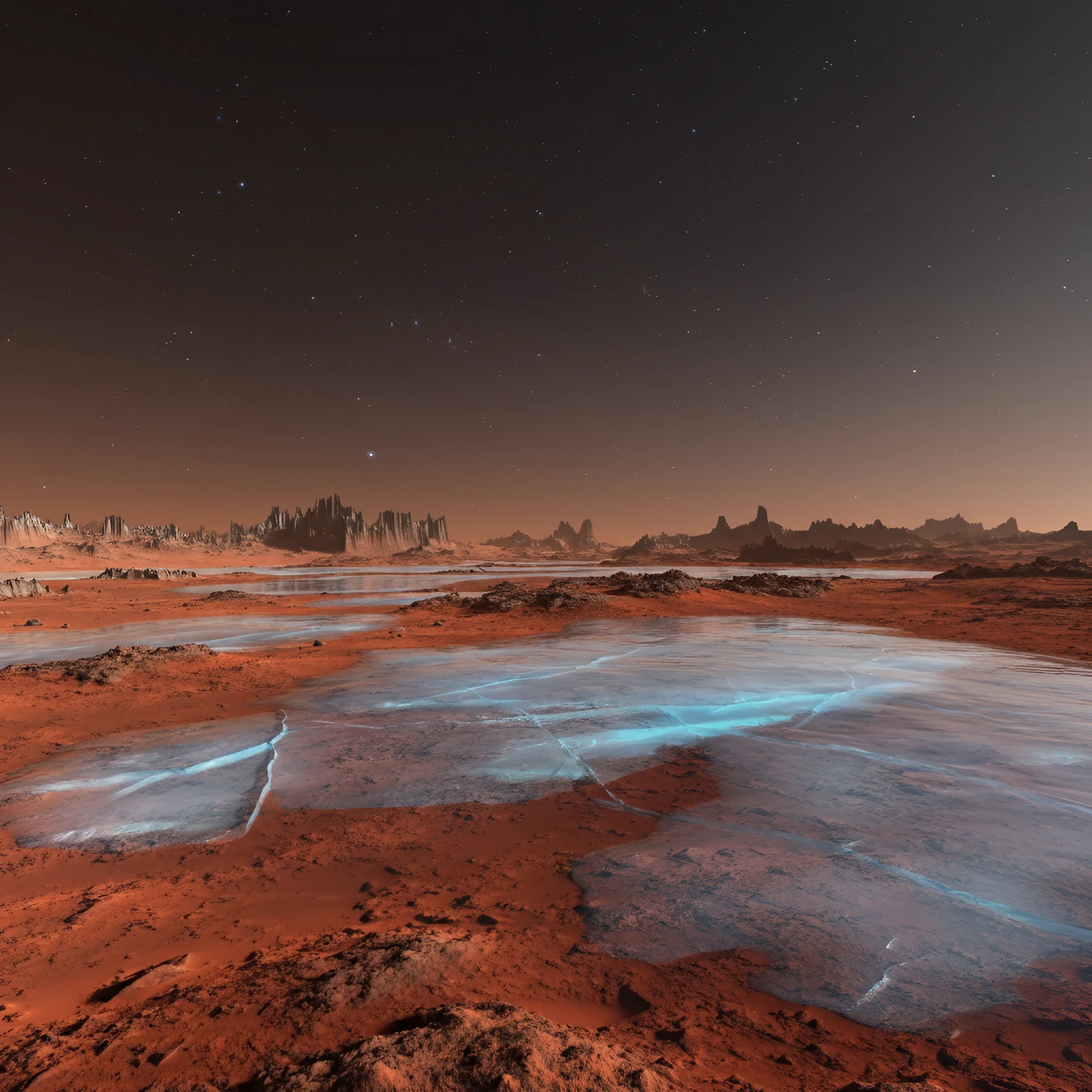For decades, scientists have debated whether Mars – the cold, arid, and rocky neighbor of Earth – once harbored vast oceans. Recent research and discoveries have reignited the discussion, offering compelling evidence that water once graced the planet’s surface. This article dives into the concept of “Mars oceans,” exploring the latest findings, their implications, and what the future holds for unraveling Mars’ watery past.
Evidence of Oceans on Mars
One of the most thrilling developments in the quest to confirm ancient Martian oceans comes from the data provided by China’s Zhurong rover. Researchers analyzing ground-penetrating radar have located proof of what appear to be buried beaches in the Martian northern lowlands. This geological feature is reminiscent of Earth’s ancient shorelines and provides strong evidence of a once-active water cycle.
Dr. Benjamin Cardenas of Penn State highlights the significance of these findings. “Radar data reveals sediments likely shaped by tides and waves, suggesting streams or rivers once fed into an expansive body of water,” he explains. The northern lowlands, often hypothesized to be a massive oceanic basin, now seem to hold clues buried right beneath the surface. These discoveries align with previous research that hinted at flowing rivers, lakes, and liquid water sporadically residing beneath Mars’ current surface today.
If Mars had oceans, it suggests the planet experienced periods of warm, wet conditions billions of years ago – a stark contrast to its current frigid, radiation-filled environment.
How Big Were Mars’ Oceans?
Researchers estimate that the Martian oceans were massive, covering nearly 20% of the planet’s surface. Known as the “Northern Ocean Hypothesis,” these bodies of water may have spanned an area as large as the Atlantic Ocean, with depths varying widely. At its peak, Mars’ oceans could have been hundreds of meters deep.
However, like Earth’s shorelines that change over millions of years, Mars likely underwent significant transformations. Ongoing geological activity, massive volcanic eruptions, and the loss of its protective magnetic field caused most of the water to disappear into space over time. What remains, such as ice caps or subterranean reserves, serves as a testament to these ancient waters.
Implications for Possible Life on Mars
Perhaps the most exciting aspect of Mars’ ancient oceans lies in what it means for extraterrestrial life. On Earth, oceans are the cradle of life, where simple organisms first evolved in the nutrient-rich, watery environment. If Mars once had ocean shores and river mouths, those environments might have been favorable for microbial life.
Dr. Cardenas also notes that beaches, where air meets shallow water, are prime locations for the chemistry necessary to kickstart life. These interfaces may have provided the perfect conditions for life to emerge, mirroring Earth’s evolutionary history.
Scientists hope that future missions will explore these ancient shorelines to search for fossilized remains or chemical biosignatures that could confirm Mars was not only wet but also alive.
Comparing Mars’ Oceans to Earth’s Oceans
Mars’ oceans likely differed significantly from Earth’s in terms of composition and longevity. While Earth’s oceans are rich in minerals and salts that sustain complex ecosystems, Martian oceans may have been more acidic, with a higher concentration of certain salts due to volcanic activity.
Topographically, Mars lacks the tectonic plates that drive Earth’s dynamic geology, meaning Mars’ oceans likely didn’t have mid-ocean ridges or subduction zones. Instead, its water basins were likely shaped by impact craters and volcanic depressions.
Yet, the similarities are equally fascinating. Both planets exhibited liquid water cycles, evaporation, and precipitation billions of years ago. Mars even had river valleys and deltas similar to those on Earth, suggesting that these processes were once active.
Future Missions to Explore Mars’ Oceans
While modern Mars missions have focused on studying ice caps and sedimentary rocks, future exploration plans may take researchers directly to these suspected ancient shorelines. A targeted mission could analyze sediment deposits, mineral compositions, and radar data for clearer insight into Mars’ watery history.
High-priority research goals include:
- Deploying advanced rovers with tools specifically designed to examine fossilized microbial life.
- Using ground-penetrating radar to map buried shorelines or ancient rivers with higher precision.
- Conducting on-site experiments to analyze sediments for biosignatures.
Human exploration may also contribute to uncovering Mars’ secrets. Crewed missions planned for the 2030s by NASA and SpaceX may collect data from these key regions, building on the robotic groundwork laid by rovers like Perseverance, Curiosity, and Zhurong.
Mars Oceans and the Bigger Picture
Understanding the history of Mars’ oceans is not just exciting for space enthusiasts; it helps scientists grapple with universal questions about planetary evolution. Did Mars’s oceans foster life billions of years ago? Could Earth face similar existential changes if its magnetic field were to weaken? Answering these questions would not only reshape our understanding of our planetary neighbor but also offer lessons crucial for humanity’s survival.
The red planet’s promising past reminds us how dynamic and interconnected planetary systems can be. From tides to tectonics, every environmental shift reveals both opportunities and challenges for life.
Eager to learn more? Space enthusiasts and researchers alike can stay updated on upcoming missions and advancements that may finally uncover the secrets of Mars’ lost oceans. Together, we’re on the brink of a groundbreaking discovery that could reshape our cosmic understanding.
[Note on Image Generation]
Included visuals could depict:
- Mars’ Northern Lowlands with an overlay of hypothetical ocean sizes versus current topography.
- Comparison Diagrams showcasing Earth’s oceans relative to estimated sizes and boundaries of Mars’ past oceans.
- Illustrations of Martian Shorelines, with sandy beaches and flowing rivers feeding into the vast expanse of water.








